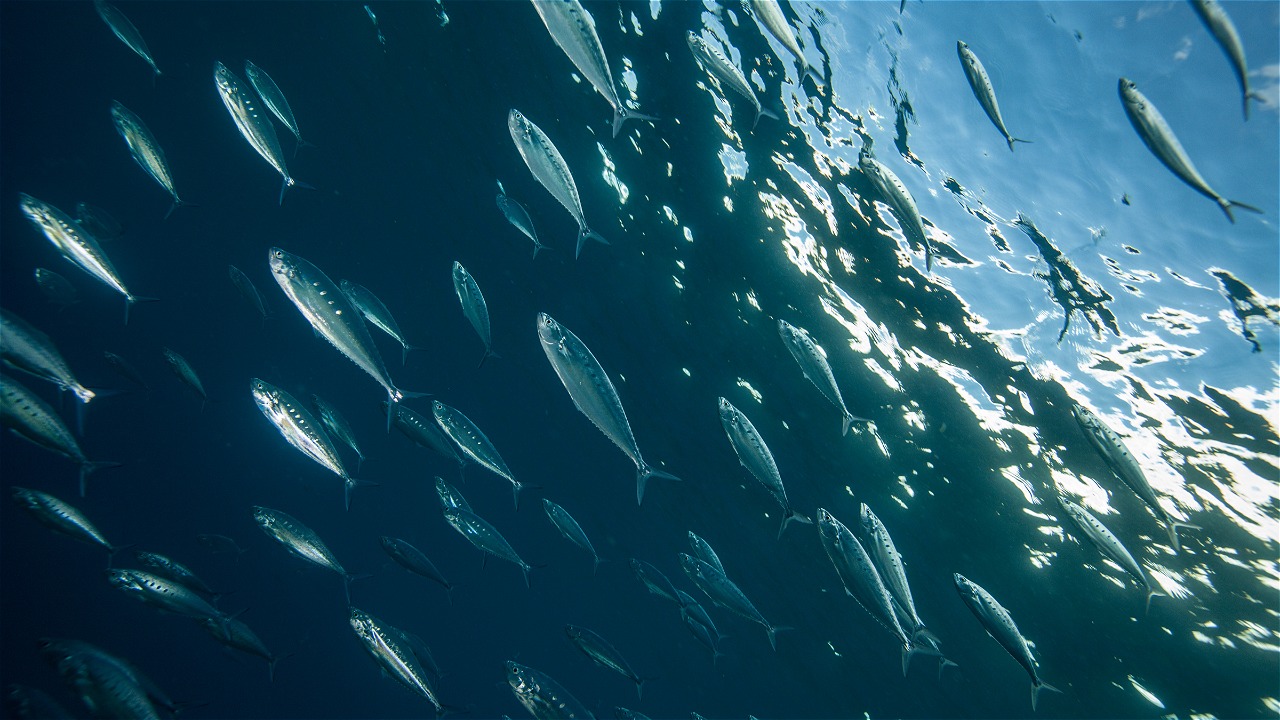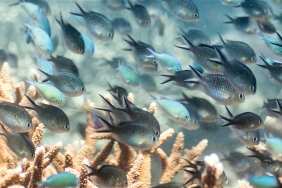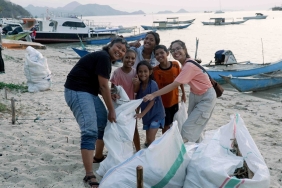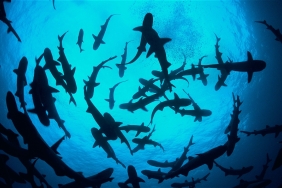TWO DECADES ON, THE HADING MULUNG OF THE BARANUSA INDIGENOUS COMMUNITY IS BACK IN FORCE
By: Nisa Syahidah (Sunda Banda Seascape Communication & Campaign Assistant, WWF-Indonesia)
"O all spirits, whether on land, sea, or air. From all directions, we request your presence. This prohibition we make, and whoever violates it, then you will see him."
That's roughly the meaning of the amor (mantra) in the Baranusa language spoken by Mr. Sengaji Gini, the traditional elder of the Sandiata tribe. He was leading a traditional ritual called Hading Mulung, a ceremony to close the sea from all human use for a year. The blood and part of the meat of three goats are spilled into the sea as pouneda (offerings) so that the spirits will protect the sea and its contents.
People believe that those who violate Hading Mulung will be eaten by crocodiles, the most feared animal in the sea. The crocodile is none other than the embodiment of the spirit of the ancestors of the Sandiata Tribe, the tribe that leads the sea protection rituals in the Baranusa indigenous community order.
Syahdan, Sandiata's ancestors who had failed to escape the tsunami, turned into crocodiles guarding the waters of Lapang Island and Batang Island. These two islands have been Sandiata's customary territory since the Dutch colonial era, and are also part of the Pantar Strait and Surrounding Sea Natural Reserve (SAP).
The area of Lapang Island is 249 hectares. Dozens of temporary houses owned by fishermen stand on a field covered by thousands of kehe (clam) shells. At some points, live wooden trees stand, slightly neutralizing the scorching sun that is familiar to this small island. A mosque has just been built and is called Nurul Bahri, meaning the light of the ocean.
On that day (30/10), the Baranusa indigenous people from five coastal villages in West Pantar Subdistrict, Alor Regency, East Nusa Tenggara, gathered on this island without a water source. They came from various elements of the Baranusa, Blangmerang, Ilu, Baraler and Piring Sina villages. Starting from children and women, traditional elders, community leaders, to the King of Baranusa himself.
Crossing by small boat for an hour from Baranusa, we arrived one day earlier at Lapang Island. The sun was setting as we walked the short distance to the shoreline due to the low tide. That night, the women were cooking while a traditional meeting was held, preparing to chronicle the rise of the traditional institution of Hading Mulung the following day.





